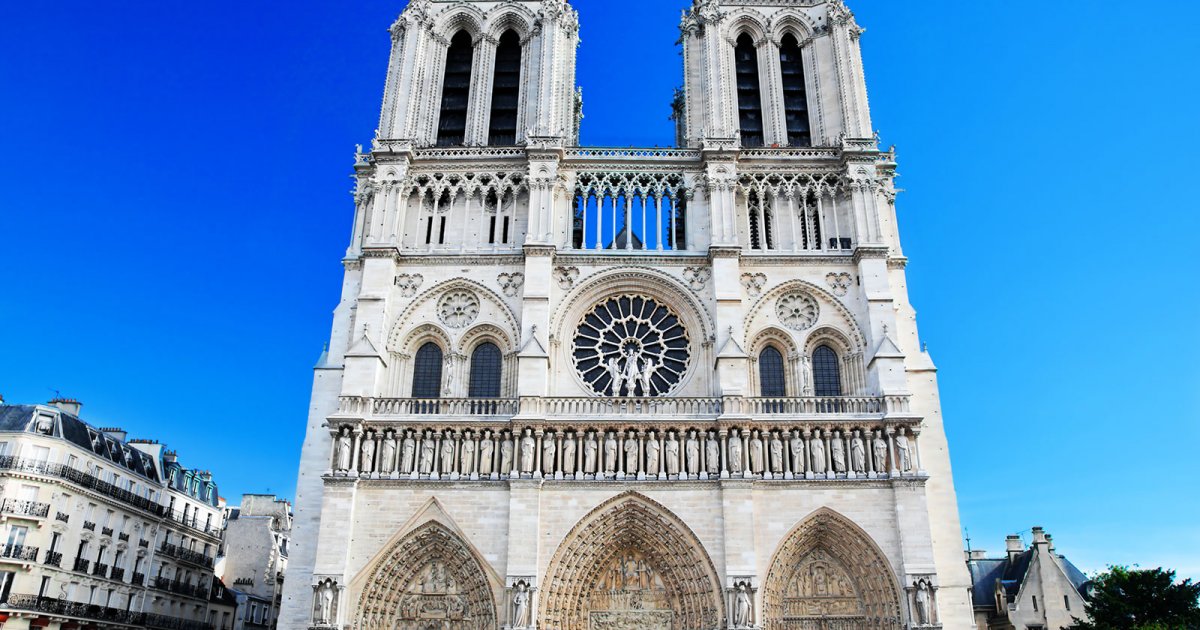NOTRE DAME, Façade
 Language: English / USA
Language: English / USA
Now you know the history of Notre Dame, your visit to the cathedral begins with the main western facade, one of the most beautiful facades in Europe. Like most of the old churches in Paris, Notre-Dame is built according to the traditional orientation with a west-facing facade and east-facing rear, so the light hits the main altar at sunrise.
The cathedral is an exemplary model of the Gothic style, boasting extraordinary coherence of style and perfect harmony, although as I mentioned earlier, it took almost two centuries to complete. As you can see, much of its charm is down to the light stone, which brightens up the whole edifice. Note also the ingenious structural details such as the flying buttresses, which not only make the building look taller and lighter, but also contribute enormously to its magnificence, especially at the rear.
The twin square towers crowned with terraces that make the facade so recognizable are 69 meters high.
Imagine now that the cathedral is a great stone page to be read from the bottom up, rising from the ground to the sky, and with the figure of Mary, to whom it is consecrated, as its guiding principle.
Of the three finely sculpted portals at the base, the oldest is the one to your right, consecrated to Saint Anne, mother of Mary. The one in the center is consecrated to the Last Judgment, and was altered in the 18th century to facilitate the passage of royal processions. Finally, the portal on the left is consecrated to the Assumption of the Virgin.
Look at the Gallery of Kings above the portals, with its 28 statues of Judean kings restored in the 19th century after the originals were decapitated and destroyed during the revolution.
Now look higher up at the circular rose window in the center of the facade, that lights up the interior.
At the top of the towers you can also see the famous gargoyles, the monstrous or diabolical statues that have sparked the imagination of film directors and are always a favorite subject for photographers. They actually have functional purpose - they drain rainwater out of their mouths.
FUN FACT: some of the original heads of the statues of Old Testament kings that were demolished during the French Revolution are on display at the Musée de Cluny. Do you know how they found them? They dredged them up from the bottom of the Seine!



